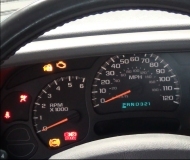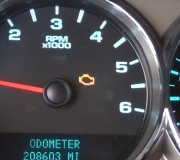The only other thing I can suggest is a plugged pickup screen in the gas tank. My daily driver is a rusty trusty '88 Grand Caravan. This happened to mine many years ago and it only acted up on the two hottest days of summer, then not again until six months later. It will mainly cause stalling when the largest volume of fuel is being pumped, which is during coasting. At highway speeds it will run fine. I don't know why the outside temperature plays such a big role but I'm starting to see the same thing now. Mine also acts up when I'm dragging around a really huge tandem axle enclosed trailer.
The way I figured it out this time is I've been driving around with a fuel pressure gauge hooked to my radio antenna so I can watch what happens when the problem occurs. My 3.0L runs a much higher fuel pressure than the 2.5L. Normal is around 45 to 50 psi. The pressure should go up when accelerating or pulling a heavy load. Mine drops to as low as 20 psi and the engine still runs. I can feel it about to quit when it hits 15 psi.
The fuel supply system is not monitored by the Engine Computer so it won't set any diagnostic fault codes. If you're losing spark, there should be a code related to the cause. Have you checked for codes yet? Chrysler makes that real easy. Cycle the ignition switch three times from "off" to "run" within five seconds without cranking the engine, leave it in the "run" position, then watch the Check Engine light. Count the number of flashes. That's the first digit of the code. After a short pause count the flashes to get the second digit. After a longer pause the next code will flash the same way if there is one. The last code will be 55 which just means "end of message".
Sunday, June 9th, 2013 AT 1:29 AM





